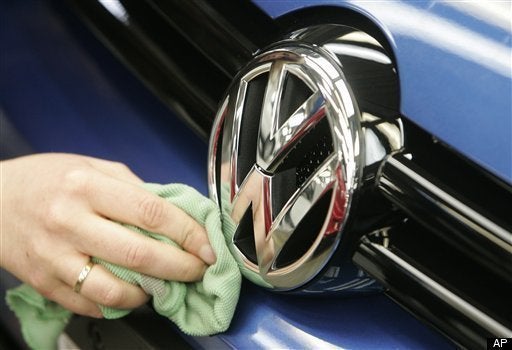
High taxes, heavy regulation, powerful unions and a big welfare state are turnoffs for pretty much any true blue (and especially red) American, but they are also the four cornerstones that have led Germany to its strongest quarter in 20 years.
Today, the world's fourth largest economy in the world confirmed a 2.2 percent GDP growth in the second quarter, a tremendous feat for a developed nation during a global downturn. To compare, America grew 0.6 percent during the same quarter (and similarly, France grew 0.6 percent and Spain by 0.2 percent).
German unemployment has decreased to the near pre-recession level of 7.6 percent, from 9.1 percent in January.
Economists more or less agree on the reasons: first of all, as the second-largest exporter in the world, German GDP was bolstered by a growing Asian appetite for German brands like BMW and Mercedes-Benz. In the first half of the year, Germany sold $575 billion worth of goods and services, up 18.2 percent from the year before. Although some analysts are cautious about relying on exports, there do not appear to be any waning signs, yet.
Secondly, the German government has prioritized keeping German workers. Unlike America, for example, Germany still manufactures most of its own goods, so that any export revenue is driven back to the country. A recent New York Times article also highlighted a government-subsidized labor program used to avoid layoffs:
[Government officials] extended the "Kurzarbeit" or "short work" program to encourage companies to furlough workers or give them fewer hours instead of firing them, making up lost wages out of a fund filled in good times through payroll deductions and company contributions.
NYT reader Gary Cohn of Chicago, for one, was in full support of this approach:
All in all, the German model of fully empowered labor cooperation with management has produced a far more robust, rational and moral economy than the one we have, in which labor has little say, firing employees is cause for celebration and lavish bonuses are given in the executive suites.
As was CNN's Fareed Zakaria, in his GPS report over the weekend:
Germans are...attentive to the risks of losing technical skills. So while U.S. businesses shed jobs the minute they see the demand for their products drying up, German businesses are more careful. They are more likely to keep their workers, perhaps on half time, or even quarter time, rather than fire them. They believe that this retains the workers' skills and his loyalty so that when the economy revives, the company has trained workers ready to ramp up.
At the same time, the German government has imposed "strict wage control, a retirement age rising to 67 from 65, lower welfare payments and eased hiring and firing," the NYT notes.
As a result, consumer confidence is also at an all-time high. Economy Minister Rainer Bruederle recently claimed domestic demand accounted for 60 percent of his country's economic revival. Although this sounds a bit high, imports rose 16.8 percent to $486 billion during the first half.
Why? One possible reason, according to Zakaria, is personal financial discipline:
The German consumer was prudent and didn't spend more money than he had...They never maxed out on their credit cards. They never took out home equity loans. One reason that American consumers aren't spending right now is that they are still working off mountains of debt. The average American has a debt load that is 122 percent of his annual income. The German average is a more manageable 100 percent.
What do you think America can learn from the German model of austerity?
For more, visit our new Third World America section.